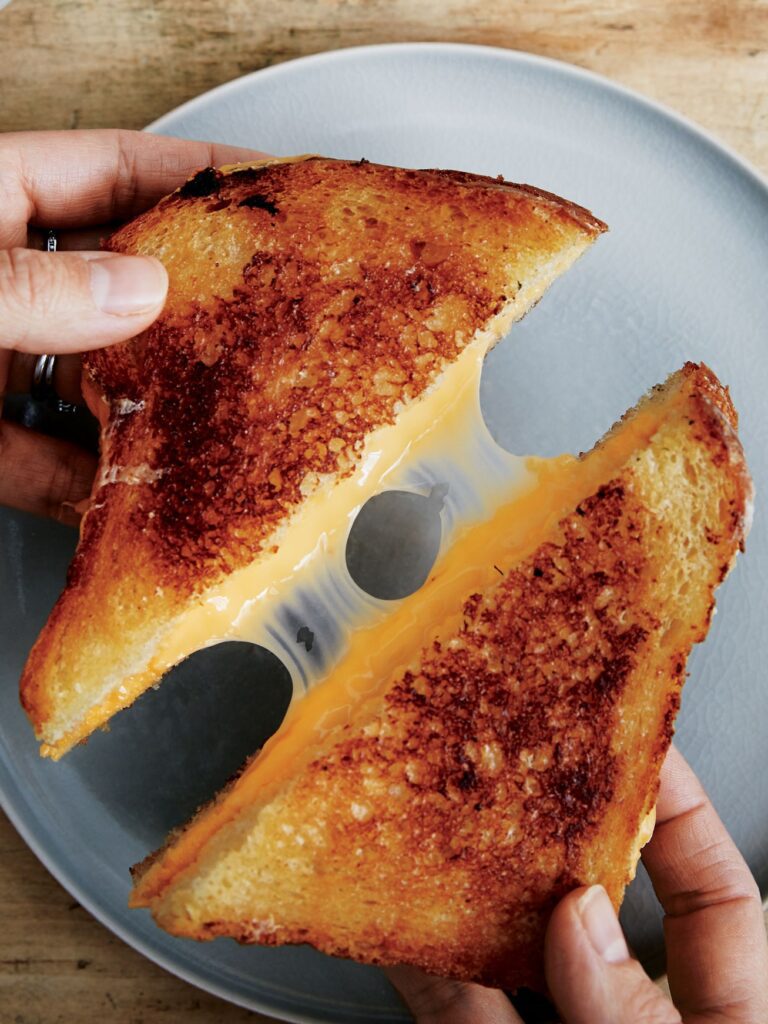Cheese is a versatile and delicious ingredient that adds depth and flavor to any dish. There are many different types of cheese, including fresh, semi-soft and hard cheese, and blue cheese. Cheese is a rich source of essential nutrients like protein, calcium, and phosphorus, but it should be consumed in moderation due to its high saturated fat content. When using cheese in recipes, consider its flavor and texture, grate it for better flavor distribution, and don’t overcook it. Trying new types of cheese in recipes is a fun way to explore new flavors and add depth to cooking.
The Magic of Cheese: How to Choose and Use Different Types of Cheese in Your Recipes
Cheese is one of the most versatile and delicious ingredients in any cuisine. From the tantalizing tang of sharp cheddar to the creamy goodness of brie and the complex flavors of gorgonzola, cheese adds depth and flavor to any dish. However, choosing the right type of cheese can be a challenge. In this article, we’ll explore the different types of cheese and how to use them in your recipes for optimal flavor and nutrition.
Types of Cheese
Cheese can be categorized based on several factors, including texture, flavor, and the method of production. Here are some of the most popular types of cheese:
Fresh Cheese
Fresh cheese, as the name suggests, is cheese that is not aged. Examples include cottage cheese and cream cheese. Fresh cheese has a mild flavor and a smooth, soft texture, making it perfect for spreads, dips, and toppings.
Semi-Soft Cheese
Examples of semi-soft cheese include gouda, havarti, and monterey jack. These cheeses have a creamier texture than fresh cheese and a more pronounced flavor. Semi-soft cheese is ideal for melting and grilling.
Hard Cheese
Hard cheese is aged longer than other types of cheese, resulting in a dense texture and an intense flavor. Examples include cheddar, parmesan, and pecorino romano. Hard cheese is perfect for grating and adding to dishes for a burst of flavor.
Blue Cheese
Blue cheese is a type of cheese that has been inoculated with mold spores. The mold creates the characteristic blue-green veins that give blue cheese its distinct flavor. Examples of blue cheese include gorgonzola, roquefort, and stilton. Blue cheese is perfect for salads and can also be used to make sauces and dips.
Nutritional Value of Cheese
Cheese is a rich source of several essential nutrients, including protein, calcium, and phosphorus. Here’s a rundown of the nutritional value of some popular types of cheese:
- Cheddar Cheese: Cheddar cheese is a good source of protein, with around 6 grams per ounce. It also contains calcium, vitamin D, and vitamin K. However, cheddar cheese is high in saturated fat, so it should be consumed in moderation.
- Brie Cheese: Brie cheese is lower in protein than cheddar cheese, with around 5 grams per ounce. However, it is high in calcium and vitamin B12. Brie cheese is also lower in calories than many other types of cheese.
- Parmesan Cheese: Parmesan cheese is high in protein, with around 10 grams per ounce. It is also a good source of calcium and phosphorus. However, like cheddar cheese, parmesan cheese is high in saturated fat.
- Gorgonzola Cheese: Gorgonzola cheese is high in protein, with around 5 grams per ounce. It is also a good source of vitamin B12 and phosphorus. However, gorgonzola cheese is also high in sodium, so it should be consumed in moderation.
Tips for Choosing and Using Cheese in Your Recipes
Here are some tips to help you choose and use cheese in your recipes:
- Consider the flavor and texture of your cheese: Think about how the cheese will complement the other flavors in your dish. If you’re making a bold, spicy dish, you might want to choose a mild cheese to balance out the flavors. Similarly, think about the texture of your cheese. A soft, creamy cheese might not hold up well in a dish that requires grating or melting, so choose a hard cheese instead.
- Grate your cheese for better flavor distribution: If you’re adding cheese to a dish, it’s often better to grate it rather than adding it in chunks. Grating your cheese allows it to distribute evenly throughout your dish, for maximum flavor impact.
- Don’t overcook your cheese: Cheese can turn greasy and lose its flavor if it’s overcooked. When adding cheese to a dish, be sure to add it toward the end of the cooking process, and remove it from heat once it’s melted.
- Experiment with new cheeses: Don’t be afraid to try new types of cheese in your recipes. Sampling different types of cheese can be a fun and exciting way to explore new flavors and add depth to your cooking.
Cheese: A Magic Ingredient
Cheese is a magic ingredient that can turn any dish from ordinary to extraordinary. Whether you’re looking for a burst of flavor, a creamy texture, or a boost of essential nutrients, cheese has it all. By choosing and using different types of cheese in your recipes, you can take your cooking to the next level and dazzle your taste buds.
